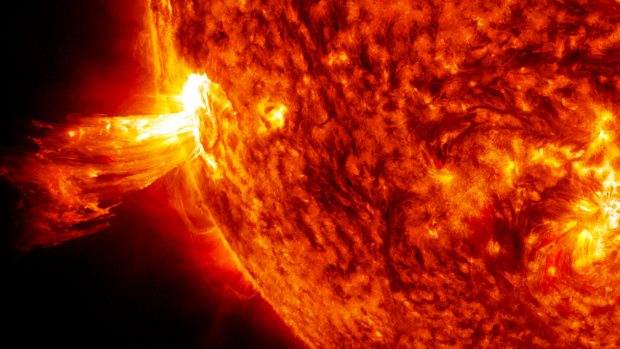NASA on Alert: Scientists Gear Up for Solar Storms at Mars
This coronal mass ejection, captured by NASA’s Solar Dynamics Observatory, erupted on the Sun on August 31, 2012, traveling over 900 miles per second and sending radiation deep into space. Earth’s magnetic field shields it from radiation produced by solar events like this one, while Mars lacks that kind of shielding. Credit: NASA/SDO
The Sun will be at peak activity this year, providing a rare opportunity to study how solar storms and radiation could affect future astronauts on the Red Planet.
In the months ahead, two of NASA’s Mars spacecraft will have an unprecedented opportunity to study how solar flares — giant explosions on the Sun’s surface — could affect robots and future astronauts on the Red Planet.
That’s because the Sun is entering a period of peak activity called solar maximum, something that occurs roughly every 11 years. During solar maximum, the Sun is especially prone to throwing fiery tantrums in a variety of forms — including solar flares and coronal mass ejections — that launch radiation deep into space. When a series of these solar events erupts, it’s called a solar storm.
MAVEN observes radiation, solar particles, and more from high above Mars. The planet’s thin atmosphere can affect the intensity of the particles by the time they reach the surface, which is where NASA’s Curiosity rover comes in. Data from Curiosity’s Radiation Assessment Detector, or RAD, has helped scientists understand how radiation breaks down carbon-based molecules on the surface, a process that could affect whether signs of ancient microbial life are preserved there. The instrument has also provided NASA with an idea of how much shielding from radiation astronauts could expect by using caves, lava tubes, or cliff faces for protection.
Curiosity was built by NASA’s Jet Propulsion Laboratory, which is managed by Caltech in Pasadena, California. JPL leads the mission on behalf of NASA’s Science Mission Directorate in Washington. The RAD investigation is supported by NASA’s Heliophysics Division as part of NASA’s Heliophysics System Observatory (HSO).

